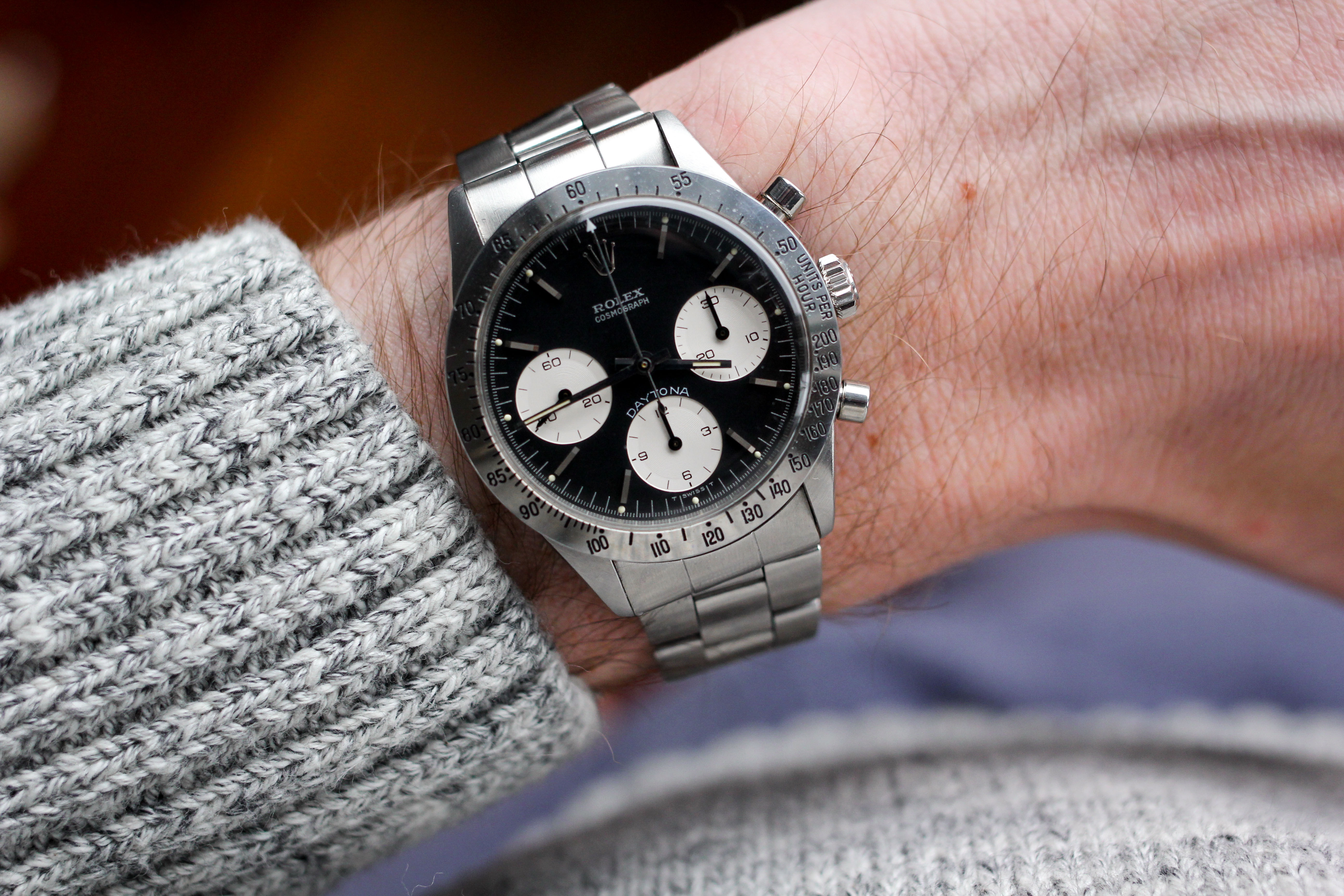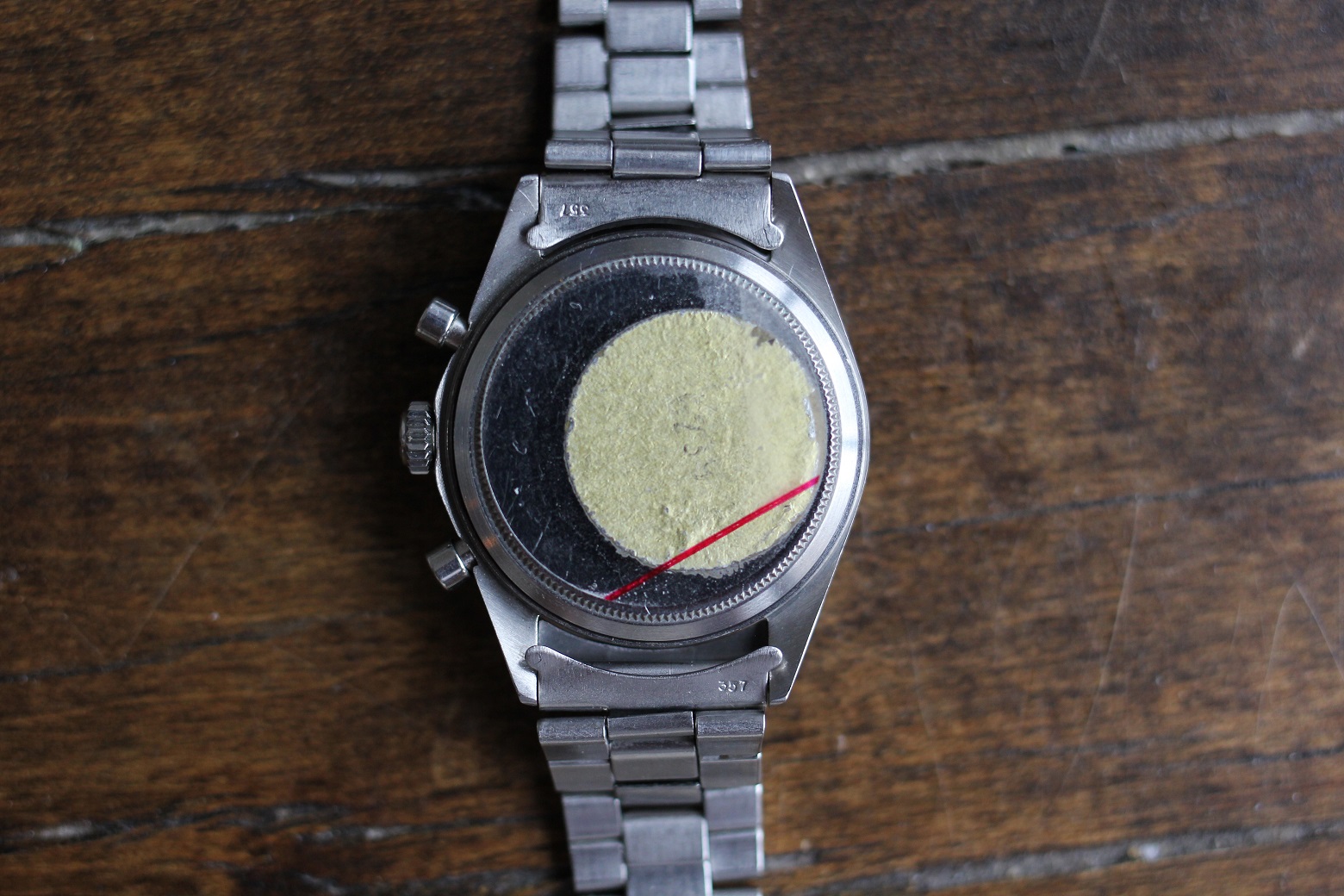It’s so easy to hate the Rolex Daytona in superficial ways. You know what I mean, probably – the pictures of insane get-togethers at some tropical resort where an entire table is covered in Paul Newman Daytonas – they have a way of turning off the average collector. The Daytona isn’t rare (relative to the production numbers of other sought-after chronographs from the era), and it’s not groundbreaking from a technical standpoint (the watch is powered by an adjusted Valjoux 72 movement), yet the price of an “entry level” Daytona is more than the price of most new cars on the road today. In what world does that make sense?
The above encapsulates how I felt about the Daytona for a long time. I could never rationalize spending that much on something that wasn’t insanely rare, so I resorted to reminding myself of all the reasons why I didn’t need one anyways. Unfortunately, you can lie to anyone else in the world, but you can’t lie to yourself. I’ve always known that underneath my petty jealousy and honest sensibilities, I longed for a 6239 Daytona. If I ever attended a meet-up where there was a Daytona present, I would basically bee-line to the owner and fawn over the example for longer than societal norms dictated I should. I’d gush over the perfect dimensions (37mm diameter, 19mm lugs), the build quality (a terrific Oyster case), and the dial layout (my second favorite ever behind the 2447 Carrera). But as soon as I was no longer in the presence of the watch, I’d revert to a state of denial. “Think of how many other cool watches you can have for the price of one, unremarkable Daytona…The Daytona bubble is going to burst soon…Maybe one will pop up on Craiglist some day, and that’s the only way I’ll justify buying one.” It was all a pointless exercise. I knew that owning a vintage Daytona was inevitable, but I just didn’t know what would push me over the edge. In the end, all it took was two words: “I’m pregnant.”

My collection has fluctuated between expansion and consolidation for the past couple years, and while it’s romantic to consider that the core will never change, it’s also a bit unrealistic. I can say with modest certainty (and hope) that 5-6 pieces will never leave. Beyond that, however, the reality is that many will come, and many others will eventually go. When the news hit that Mrs. Bazamu and I were about to become parents, I suppose it flipped a switch internally and I saw the perfect opportunity to make a meaningful purchase of a watch that I would unequivocally keep forever and pass down to my children. There was only one choice: a 6239 Daytona.
This particular example came from a dealer (Matthew Bain) and was the exact dial layout that I wanted – silver print, two-liner, matte dial, and perfect condition. In order to make the purchase, I sold five pieces that I had acquired over the past couple years but weren’t “forever watches,” and I was also able to pocket a bit of appreciation from the more sought-after pieces, which lowered the admittedly eye-popping price of the Daytona. At a high level, the purchase ended up reducing the actual number of pieces in my collection while adding something that I’ll proudly pass down to my firstborn child one day. What could be better than that?
The Nitty Gritty
A picture is worth 1,000 words, right? Feast your eyes on this example. The dial is 100% perfect – not a stray marking or blemish to be found, and all the lume plots are full and matching in color. The case is sharp, has zero corrosion or deposits that built up over the years, and the caseback still has the original “6239” sticker on the back. It’s very apparent that this example spent most of its life in a safety deposit box, and when adhering to the mantra of “condition, condition, condition,” I don’t think it’s possible to do much better than this. If you need a “baby blue” Daytona to compare future examples against, I would humbly submit this as the gold standard. Man, Baz Jr. doesn’t even realize how lucky he’ll be one day, does he?!






